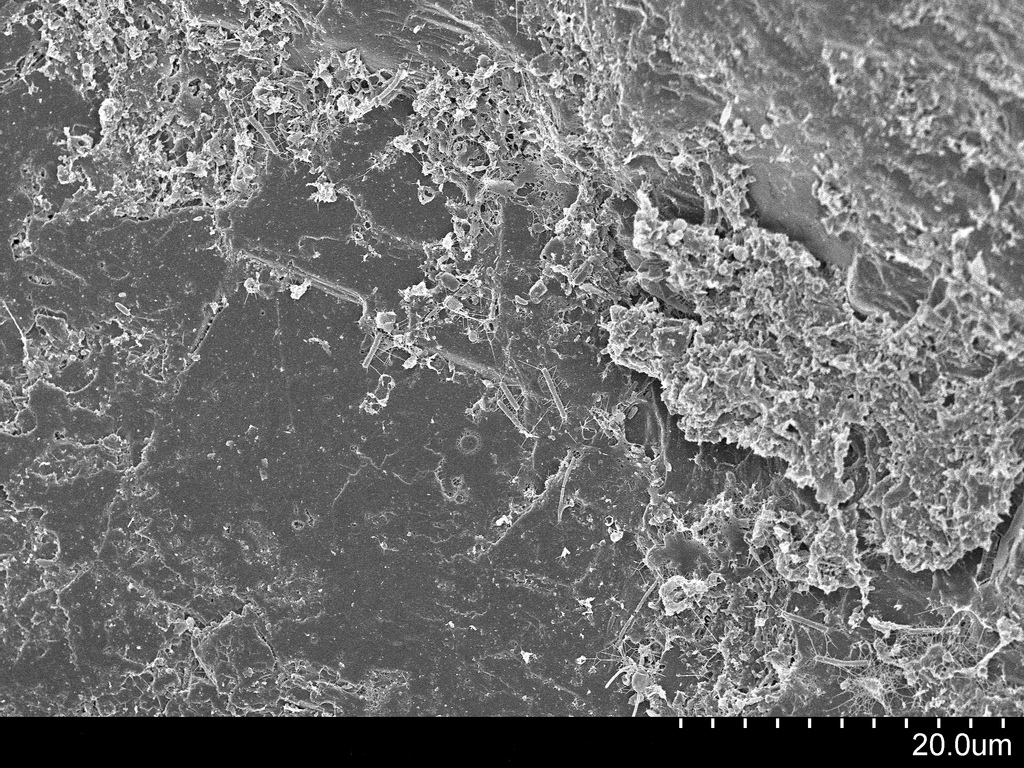
If you are involved in the treatment or distribution of water, biofilms are a key concern. When present in treatment, storage or distribution equipment, biofilms pose a serious threat to the quality and safety of processed water.
What is a Biofilm?
According to the Marshall Protocol Knowledge Base, a biofilm is a densely-packed community of microorganisms that have adhered to one another using a network of self-made polymers. These communities are architecturally complex and contain channels that take in nutrients and excrete waste. Biofilms can live on both organic and inorganic surfaces. They are found in a variety of locations ranging from the inside of the human body to the surface of a water storage tank.
Why Do They Form?
Biofilms typically form when bacteria are under stress. Much like other organisms, the bacteria react to the stress by banding together. Once they have formed the biofilm, the bacteria are more resistant to the threats that seek to destroy them, such as disinfectants and immune cells.
How Do They Form?
When bacteria are exposed to a stressful environment, they begin to form a biofilm. The first inhabitants of the film begin by creating weak bonds with the surface, which are known as van der Waals forces. Over time, these bacteria form stronger bonds with the surface using a process known as cell adhesion. While a biofilm is under construction, bacteria are capable of communicating with each other through a process called quorum sensing. This phenomenon allows a bacterium to sense how many other bacteria are nearby. Nearby bacteria engaged in the process emit chemicals to make other bacteria aware of their presence. If a large quantity is sensed by a bacterium, that bacterium is more likely to become part of a forming biofilm. This phenomenon can be used for communication within a single species of bacteria, as well as across multiple species.
Biofilms and Water Distribution Systems

- Strenotrophomonas maltophilia
- Acinetobacter baumannii
- Mycobacterium avium
- Pseudomonas aeruginosa
- Legionella pneumophila
These bacteria can cause a variety of problems in humans, ranging from mild skin rashes to serious lung infections that require hospitalization. In some cases, the infections caused by the microorganisms above can even lead to the death of the infected person.
Can Biofilms be Removed?
Bacteria form biofilms in order to protect themselves from destruction. Thus, removing biofilms from the surfaces to which they have attached themselves can be difficult. However, removal is possible. Furthermore, in the case of water distribution systems, removal is essential in order to protect the health of those who come into contact with the water processed by the system. Biofilms are typically removed from the interior surfaces of water distribution systems during the cleaning process. Several different methods of cleaning exist. However, not all of these methods are equally as effective at removing biofilms. For example, while mechanical methods of cleaning tend to be less expensive than chemical cleaning, they may not be capable of removing biofilms in their entirety. This can lead to continued contamination concerns, as well as the regrowth of the biofilm. Chemical cleaning, on the other hand, is more expensive but can thoroughly remove biofilms. Thus, it is typically the wiser choice for facilities that are concerned about the presence of biofilms.
Sources:
Photo credit: adonofrio (Biology101.org) / Foter / CC BY
Photo credit: Inverness Trucker / Foter / CC BY-SA
http://www.ncbi.nlm.nih.gov/pmc/articles/PMC2890205/
http://mpkb.org/home/pathogenesis/microbiota/biofilm
http://bacteriality.com/2008/05/26/biofilm/

